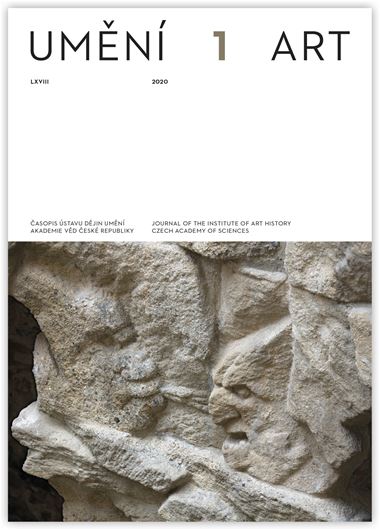Petr Čehovský
Die Devise Verbvm domini manet in aeternvm und die Konfessionalisierung der Architektur Niederösterreichs und Mährens im 16. Jahrhundert
The biblical verse Verbvm domini manet in aeternvm (The Word of the Lord endures for ever) was used for the first time in 1522 as the device of Protestants on coins and clothing at the court of the Saxon Elector Frederick the Wise. Martin Luther, in his lecture on the Book of Isaiah in 1532, desired that this verse be written ‘on every wall’. Luther’s suggestion found a very wide response among Protestant builders in Central Europe and we can follow the popularity of this device on the facades of Protestant buildings from as early as the 1530s. In this article the author focuses on an analysis of architectural monuments of Lower Austria and Moravia decorated with this device. The earliest building on which it appears is what is called the Imperial Tollgate in Stein an der Donau, built in 1536, maybe as a burgher’s house. The next, chronologically, is the magnificent house of the Litovel draper Lorenz Lang, built in 1542. Two years later it was carved on the portal of the town hall in Hranice, commissioned by the burgomaster Skřítek. The Boskovice coat of arms on the Litovel town hall of 1572 and the portal of the Lower Austrian chateau Therasburg of 1574, whose builder was the military leader Jakob vom Raming, are further evidence of the popularity of this device in the second half of the 16th century. The newest monument is the portal of the burgher’s house of Ondřej Čaputa in Hranice of 1583. These surviving monuments confirm that the device was popular both with burghers and aristocratic builders and are evidence that as early as from the 1530s there was a confessionalisation of the public space in selected cities and in aristocratic seats. The importance of the device lies in the fact that we can safely determine the builder’s Protestant religious conviction as early as the second quarter of the 16th century when, for the most part, this cannot be ascertained from other sources. A stylistic analysis of the above-mentioned buildings confirms that the Protestant builders expressed their resistance to the art of the Italian Renaissance by the use of the above-mentioned device and also by a liking for stone decoration combining elements of Gothic and Renaissance into what is known as the mixed style.
Čehovský Petr: petr.cehovsky@seznam.cz
Full-text in the Digital Library of the Czech Academy of Sciences:
https://kramerius.lib.cas.cz/uuid/uuid:d00f5deb-49f5-40d3-805a-eea60cf94e30
< back

